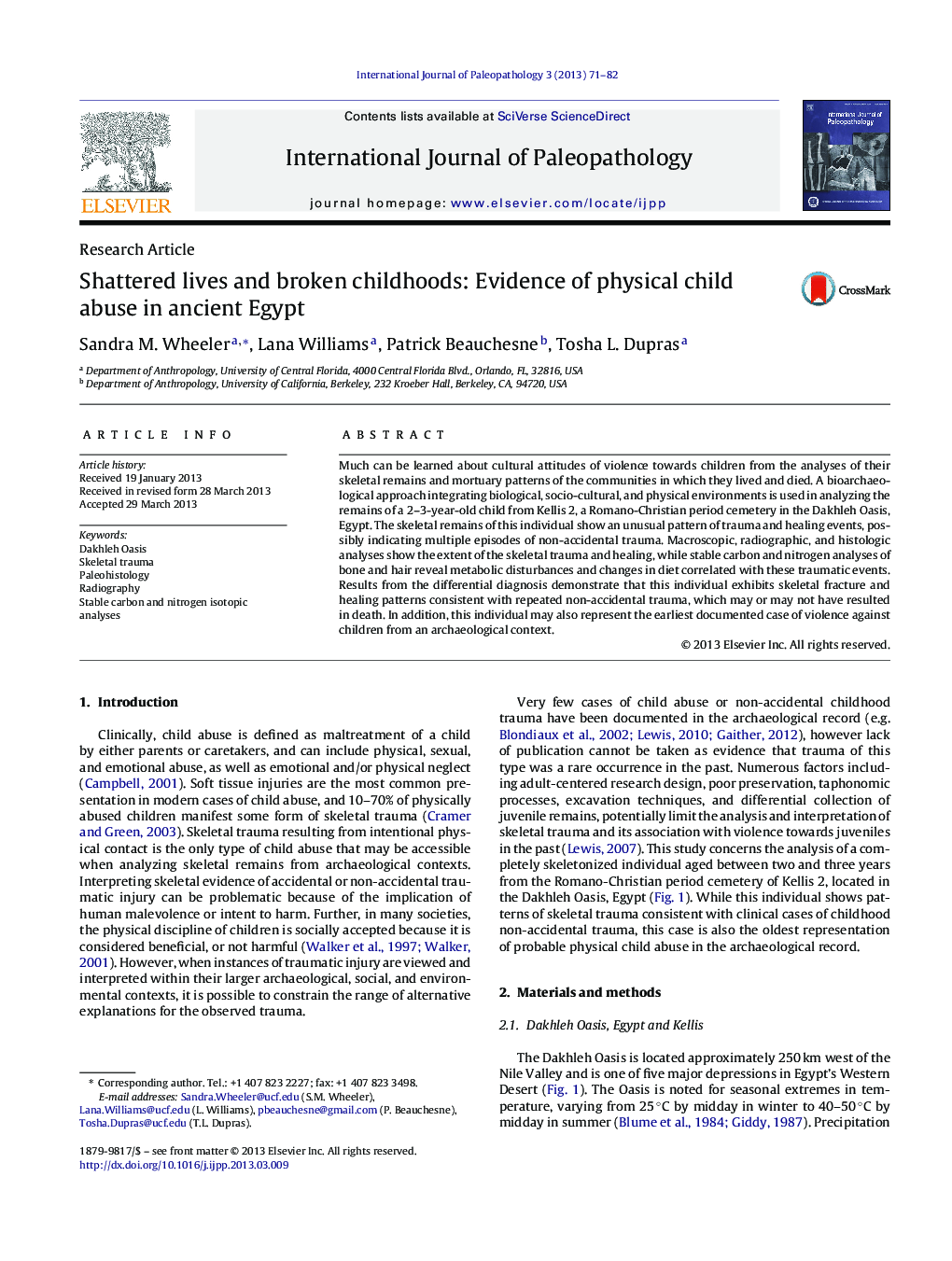| Article ID | Journal | Published Year | Pages | File Type |
|---|---|---|---|---|
| 101433 | International Journal of Paleopathology | 2013 | 12 Pages |
•Earliest documented case of child abuse in the archaeological record.•Application of macroscopic, paleohistological, and radiographic analyses to aid diagnosis.•Novel application of stable isotope analysis to assess physiological stress in response to trauma.
Much can be learned about cultural attitudes of violence towards children from the analyses of their skeletal remains and mortuary patterns of the communities in which they lived and died. A bioarchaeological approach integrating biological, socio-cultural, and physical environments is used in analyzing the remains of a 2–3-year-old child from Kellis 2, a Romano-Christian period cemetery in the Dakhleh Oasis, Egypt. The skeletal remains of this individual show an unusual pattern of trauma and healing events, possibly indicating multiple episodes of non-accidental trauma. Macroscopic, radiographic, and histologic analyses show the extent of the skeletal trauma and healing, while stable carbon and nitrogen analyses of bone and hair reveal metabolic disturbances and changes in diet correlated with these traumatic events. Results from the differential diagnosis demonstrate that this individual exhibits skeletal fracture and healing patterns consistent with repeated non-accidental trauma, which may or may not have resulted in death. In addition, this individual may also represent the earliest documented case of violence against children from an archaeological context.
Graphical abstractFigure optionsDownload full-size imageDownload as PowerPoint slide
